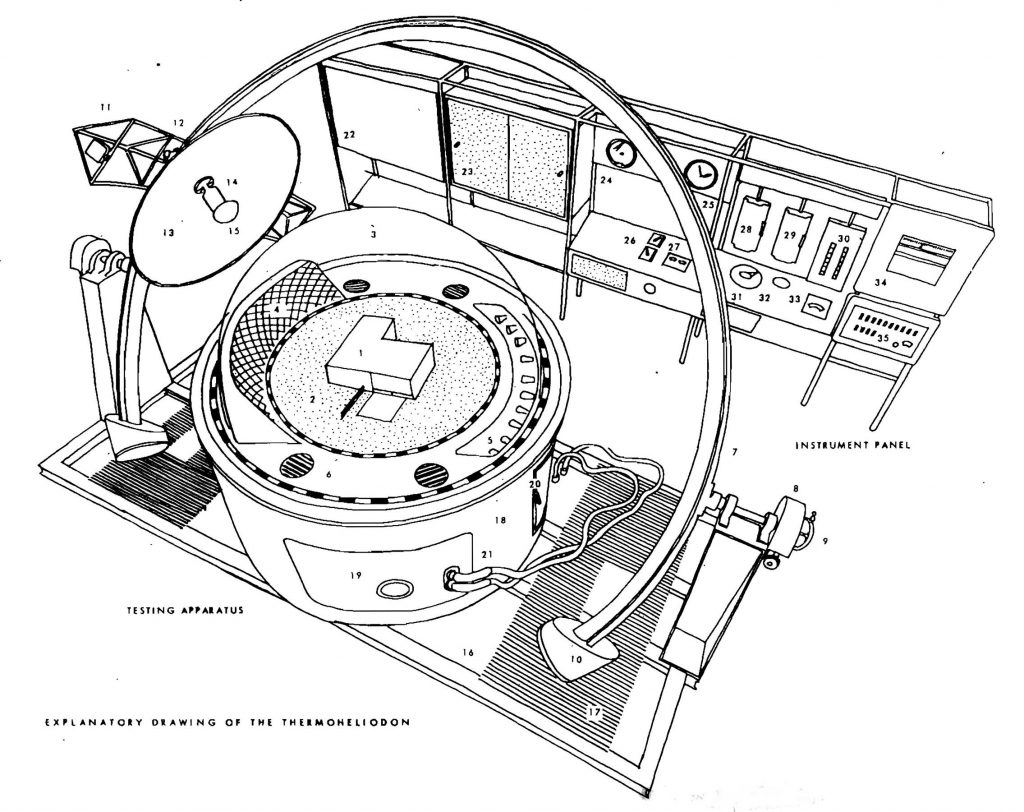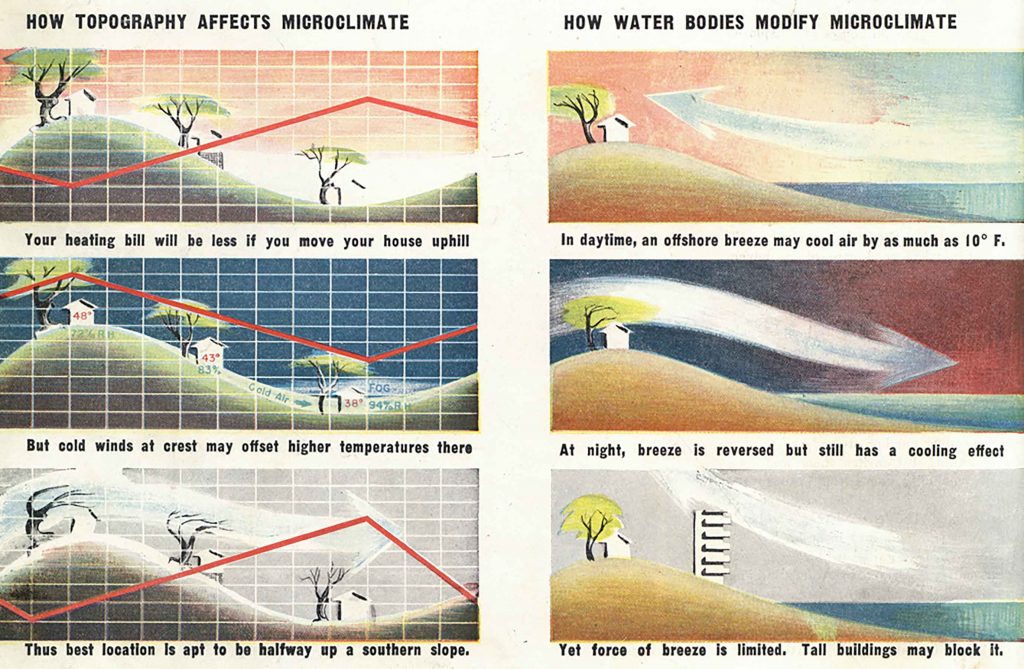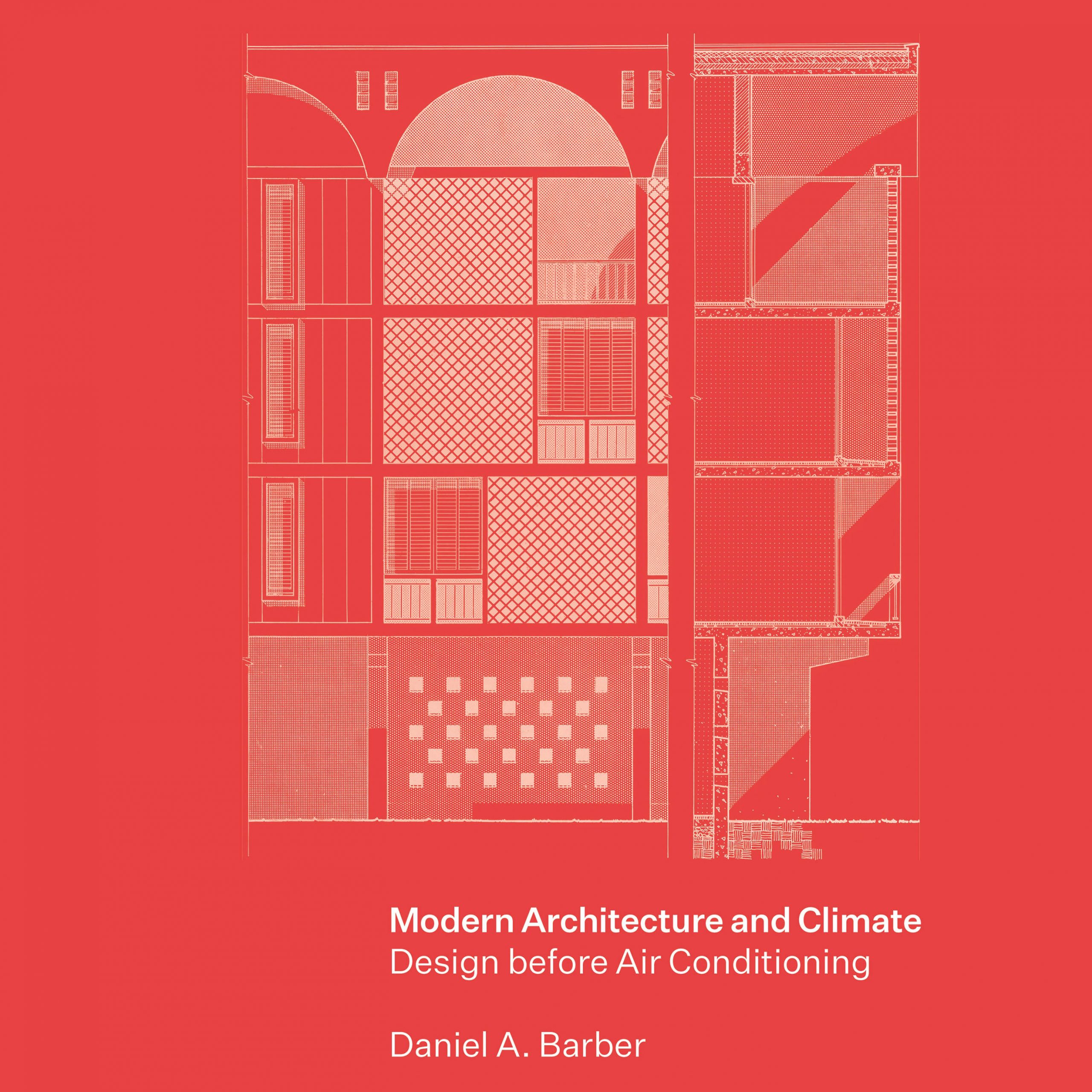***
Title: Modern Architecture and Climate: Design before Air Conditioning
Author: Daniel A. Barber
Editorial: Princeton University Press. ISBN: 9780691170039
Language: English
317 pages
***
When architects have to produce architecture based on climate factors, we may not have enough flexible design tools. Moreover, we mostly miss a historical approach that allows us to confront our ideas within a broader context. The available material about this topic has always been scarce, and we usually need to go through secondary information in books that indirectly deal with it. With this lack of tools, architects tend to face designs with a naïve attitude, aware of its limitations.
Cuando los arquitectos nos enfrentamos a la problemática de proyectar en relación al clima podemos carecer de instrumentos proyectuales lo suficientemente flexibles, pero sobretodo nos falta un enfoque histórico que permita confrontar nuestras ideas en relación a un contexto más amplio. El material de análisis disponible sobre este tema ha sido siempre escaso y la única forma de conocerlo es realizando lecturas transversales en libros que lo tratan de un modo tangencial. Con esta falta de herramientas el arquitecto se enfrentaba a los proyectos con una actitud naif, consciente de sus limitaciones.
The book Modern Architecture and Climate: Design before Air Conditioning, written by Daniel A. Barber and published by Princeton University Press, fills a gap and makes a comprehensive retrospective of design about climate from Le Corbusier to the rise and acceptance of the use of HVAC systems to condition interior spaces in the second half of the XX Century. Barber’s proposal is ambitious since it analyzes the modern movement having climate as its cornerstone. The book starts with Le Corbusier, that remains a crucial figure in the first part of the XX Century. Nonetheless, most of his projects analyzed have been considered secondary in other situations, such as the Lotissement Dwellings in Barcelona or some of his residential buildings in Argelia. Then, Barber continues his historiography in the American continent. The first stop is in Brazil, a country where the history of architecture has usually considered a division of Europe, gets a central role because of its leading climatic proposals during the 1930s. Later, the book continues in the United States through the architecture of Richard Neutra, and especially the research developed by the Olgyay brothers.
El libro Modern Architecture and Climate: Design before Air Conditioning, escrito por Daniel A. Barber y publicado por Princeton University Press, viene a cubrir este vacío y realiza una exhaustiva retrospectiva sobre el diseño climático desde Le Corbusier hasta el auge y la aceptación general del uso de aires acondicionados para acondicionar los espacios interiores durante la segunda mitad del siglo XX. La propuesta de Barber es ambiciosa ya que analiza el movimiento moderno situando el clima en el centro del discurso. De este modo, el libro comienza con la figura de Le Corbusier, que sigue siendo central en la primera parte del siglo XX. No obstante, muchos de sus proyectos a estudiar son aquellos que han sido considerados en otras ocasiones como menores, tales como las viviendas Lotissement en Barcelona o algunos de sus edificios residenciales en Argelia. A continuación, Barber se traslada al continente americano. Primero en Brasil, un país que en la historia de la arquitectura ha tenido una posición de servidumbre frente a Europa, en este libro aparece en un lugar central debido a sus avanzadas propuestas climáticas durante la de década de 1930. Más adelante el libro viaja a Estados Unidos a través de la arquitectura de Richard Neutra y sobretodo de los hermanos Olgyay.
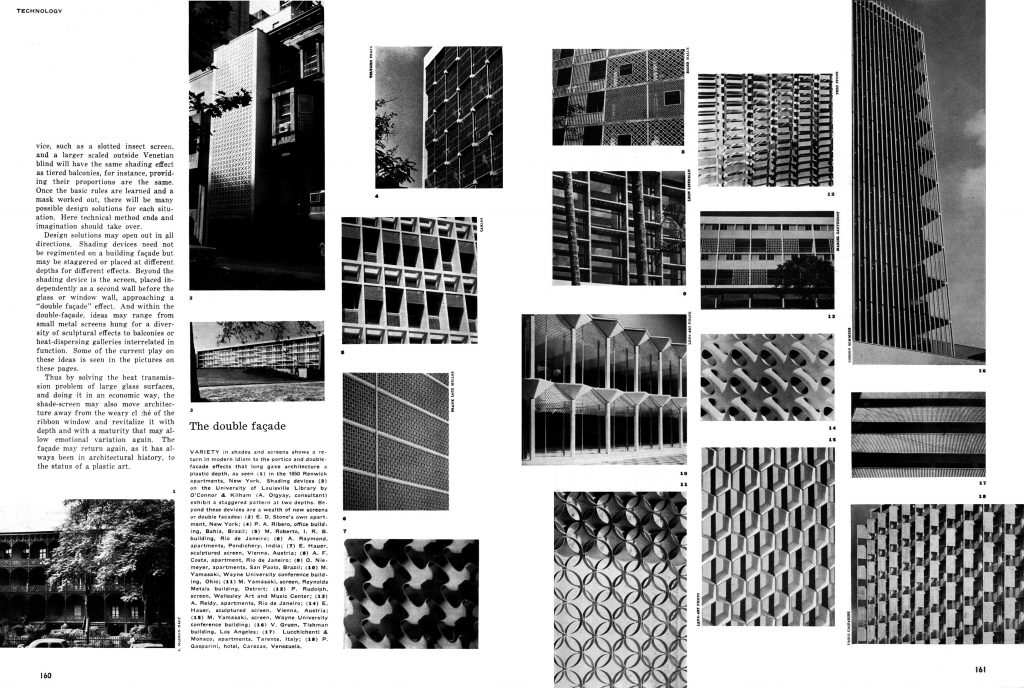
The importance of the United States in conditioning interior spaces also started to belittle to a climate-sensitive architecture once the International Style imposed its agenda. Modern Architecture and Climate: Design before Air Conditioning describes a failure: architects began to wash their hands from designing concerning climate and mechanical engineers imposed their agenda based on HVAC systems. Disconnection with climate was possibly the most significant defeat for architecture in the last century. First, there was a loss in the technical aspect of avoiding research on more efficient possibilities than MEP devices. Moreover, there was a cultural defeat: the international style finished to colonize the peripheral territories and imposed a homogeneous interior for the rest of the world regardless of its built place. As Daniel A. Barber explains, these systems were the final result of setting a western interior for the rest of the world. If the Modern Movement used climate engaged architecture to build an interior that could create a global in the former colonies, HVAC systems were an accelerator of such colonization.
La importancia de Estados Unidos en el acondicionamiento de espacios interiores también marcó en principio del fin de una arquitectura sensible al clima debido al auge del Estilo Internacional. Modern Architecture and Climate: Design before Air Conditioning describe la crónica de un fracaso: los arquitectos comenzaron a desentenderse de proyectar en relación al clima y los ingenieros de instalaciones impusieron su agenda basada en los sistemas mecánicos. Posiblemente esta sea la mayor derrota de la disciplina del siglo pasado. Al fracaso técnico de no investigar unos sistemas de climatización más eficientes frente a dichos sistemas mecánicos, se unió el fracaso cultural. El estilo internacional terminó de colonizar los territorios periféricos e impuso un clima interior homogéneo para todo el mundo sin importar el lugar donde se construía. Como explica Daniel Barber, estos sistemas son el resultado final de la imposición de un interior occidental para el resto del mundo: si la respuesta arquitectónica a los condicionantes del clima se activa en el movimiento moderno cuando los arquitectos europeos se extienden a antiguas colonias en busca de construir un interior que consiguiera un efecto globalizar, los aires acondicionados son un acelerador de dicha colonización.
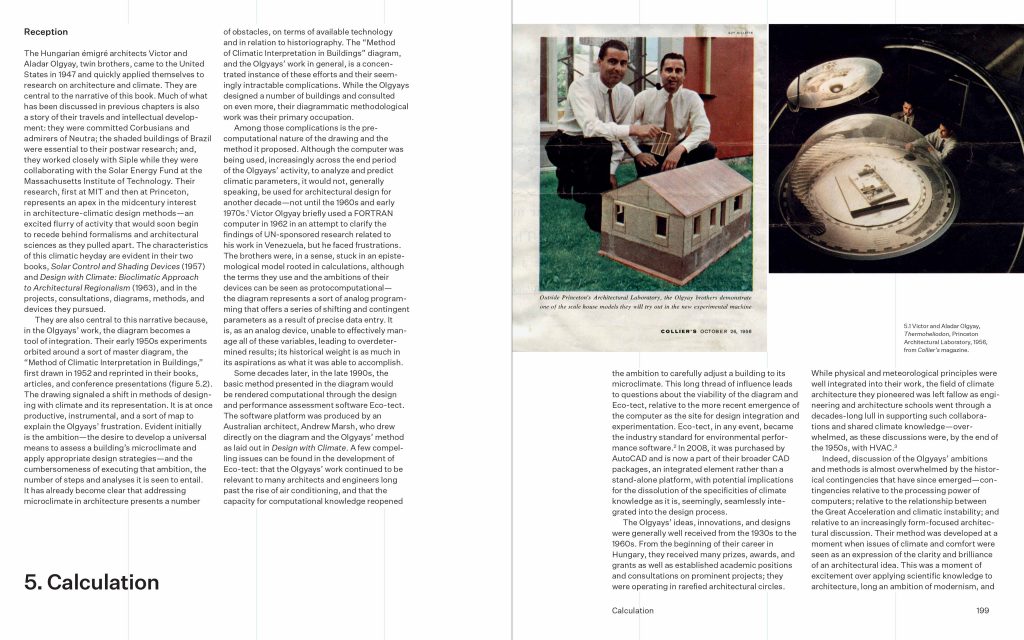
When architecture made its interior comfort conditional to some HVAC systems that we cannot fully control and understand, it provoked an ongoing disconnection to the climate. It may take a few decades to take back again. That is why the figures of Victory Olgyay and his brother Aladar, reasonably recovered by Daniel A. Barber, are essential to understand a progressive position regarding climate in the 1950s and 1960s. They attempted to continue researching other resilient possibilities to create interior comfort in a context that was already looking in another direction. Although they were not successful in transforming that trend, they were able to set some starting points that have been useful for architects in the last decades to restart the debate between architecture and climate.
Supeditar la arquitectura a unos sistemas de acondicionamiento que no logramos entender por completo y no podemos controlar provocó una paulatina desconexión frente al clima que posiblemente se tarde décadas en recuperar. Es por ello que la figuras de Victor Olgyay y su hermano Aladar, justamente reivindicadas por Daniel A. Barber, son fundamentales para entender una posición progresiva respecto al clima en los años 50 y 60. Ellos trataron de seguir investigando sobre otras posibilidades en un entorno que ya miraba hacia otra dirección. Aunque no tuvieron éxito en modificar esta tendencia, consiguieron marcar varios puntos de partida que han servido para que los arquitectos en las últimas décadas retomen el debate sobre arquitectura y clima.
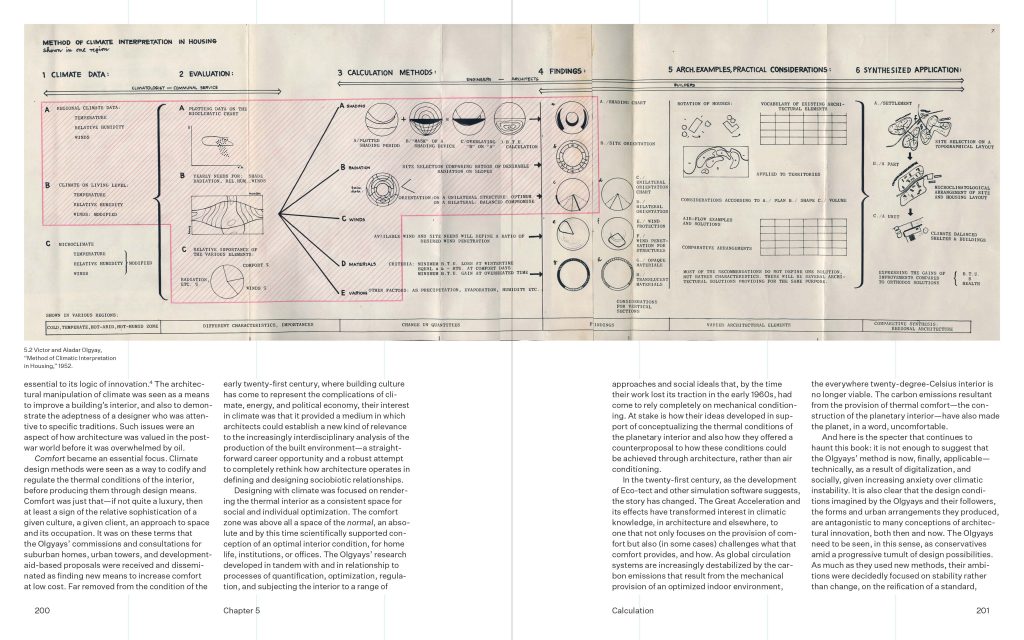
During the following years, current and new policies to fight against global warming will make architects introduce a higher sensitivity towards climate for their architectural projects. The analysis tools, already popular in the design processes, will become even more developed and straightforward to use for any professional. Nonetheless, we still need a broader historical context about the topic, analyze previous examples, find problems in past prototypes, and having a critical approach to sustainable architecture. Modern Architecture and Climate: Design before Air Conditioning, with many references, drawings, diagrams, historical photos in a splendid edition by Princeton University Press, is a great starting point to analyze climate with a critical approach. A history that is not finished yet and, during the following years, will be essential for our profession.
En los próximos años, las políticas para luchar contra el calentamiento global obligarán a los arquitectos a introducir una mayor sensibilidad hacia el clima en sus proyectos arquitectónicos. Las herramientas de análisis, ya muy extendidas en los procesos de diseños, estarán cada vez más desarrolladas y al mismo tiempo serán más sencillas de usar por cualquier profesional del sector. No obstante, aún se necesita un mayor contexto histórico sobre el tema, analizar referentes, encontrar fallos en prototipos pasados y tener una visión crítica frente a la arquitectura sostenible. Modern Architecture and Climate: Design before Air Conditioning, con un gran número de ejemplos, planos, diagramas, fotos históricas en una impecable edición por parte de Princeton University Press, es un gran punto de partida para analizar, con un enfoque crítico, la historia del clima. Una historia que aún no está terminada y que en los próximos años será decisiva para la disciplina.
“One of the effects of inserting climate into architectural histories is that i opens up a new set of events, and a new set of criteria, for understanding how that history has developed with relevance to the present.”
“Uno de los efectos de introducir el clima en la historia de la arquitectura es que abre una nueva serie de eventos y criterios para entender la relevancia de la historia con respecto al presente.
Modern Architecture and Climate: Design before Air Conditioning (c) 2020. Daniel A. Barber, published by Princeton University Press. page 25.
